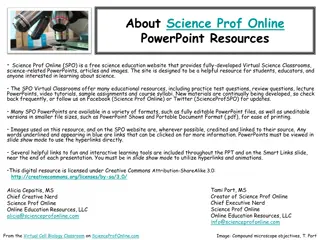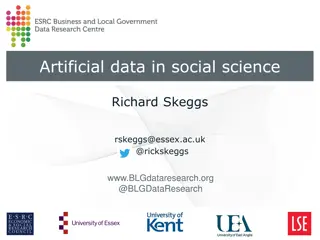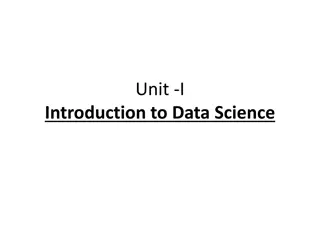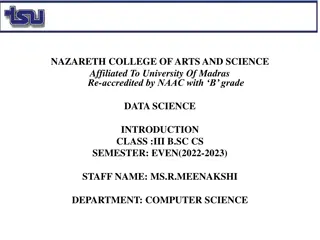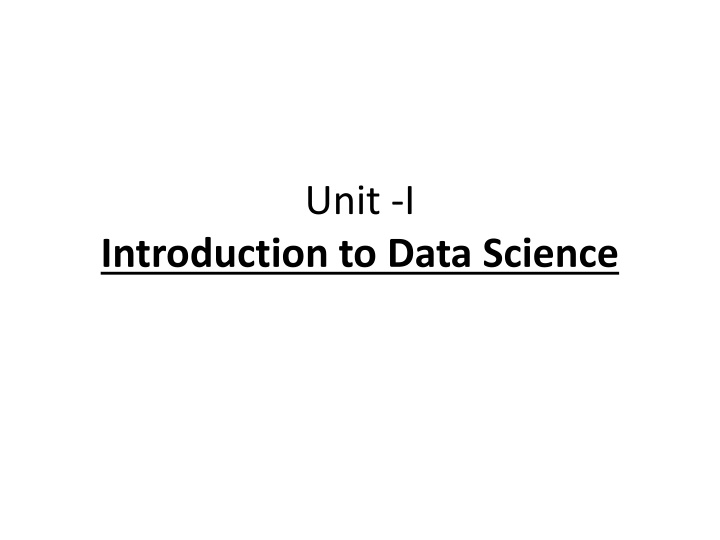
Data Science Process: Steps from Setting Goals to Automation
Explore the six essential steps of the data science process, from defining research goals and acquiring data to modeling, analysis, and automation. Understand the significance of each stage in achieving valuable insights for business decision-making.
Download Presentation

Please find below an Image/Link to download the presentation.
The content on the website is provided AS IS for your information and personal use only. It may not be sold, licensed, or shared on other websites without obtaining consent from the author. If you encounter any issues during the download, it is possible that the publisher has removed the file from their server.
You are allowed to download the files provided on this website for personal or commercial use, subject to the condition that they are used lawfully. All files are the property of their respective owners.
The content on the website is provided AS IS for your information and personal use only. It may not be sold, licensed, or shared on other websites without obtaining consent from the author.
E N D
Presentation Transcript
Unit -I Introduction to Data Science
The data science process The data science process typically consists of six steps. Data science process: 1: Setting the research goal 2: Retrieving data 3: Data preparation 4: Data exploration 5: Data modelling 6: Presentation and automation
Planning/ Setting the research goal Data science is mostly applied in the context of an organization. When the business asks you to perform a data science project, you ll first prepare a project charter. This charter contains information such as what you re going to research, how the company benefits from that, what data and resources you need, a timetable, and deliverables. Data Acquisition/ Retrieving data The second step is to collect data. You ve stated in the project charter which data you need and where you can find it. In this step you ensure that you can use the data in your program, which means checking the existence of, quality, and access to the data. Data can also be delivered by third-party companies and takes many forms ranging from Excel spreadsheets to different types of databases.
Data preparation Data collection is an error-prone process; in this phase you enhance the quality of the data and prepare it for use in subsequent steps. This phase consists of three sub-phases: data cleansing removes false values from a data source and inconsistencies across data sources, data integration enriches data sources by combining information from multiple data sources, and data transformation ensures that the data is in a suitable format for use in your models. Data exploration Data exploration is concerned with building a deeper understanding of your data. You try to understand how variables interact with each other, the distribution of the data, and whether there are outliers. To achieve this you mainly use descriptive statistics, visual techniques, and simple modelling. This step often goes by the abbreviation EDA, for Exploratory Data Analysis.
Data modelling or model building In this phase you use models, domain knowledge, and insights about the data you found in the previous steps to answer the research question. You select a technique from the fields of statistics, machine learning, operations research, and so on. Building a model is an iterative process that involves selecting the variables for the model, executing the model, and model diagnostics. Presentation and automation Finally, you present the results to your business. These results can take many forms, ranging from presentations to research reports. Sometimes you ll need to automate the execution of the process because the business will want to use the insights you gained in another project or enable an operational process to use the outcome from your model.







